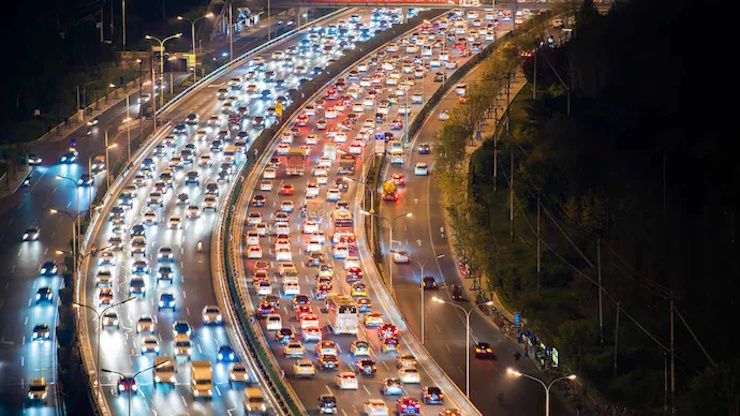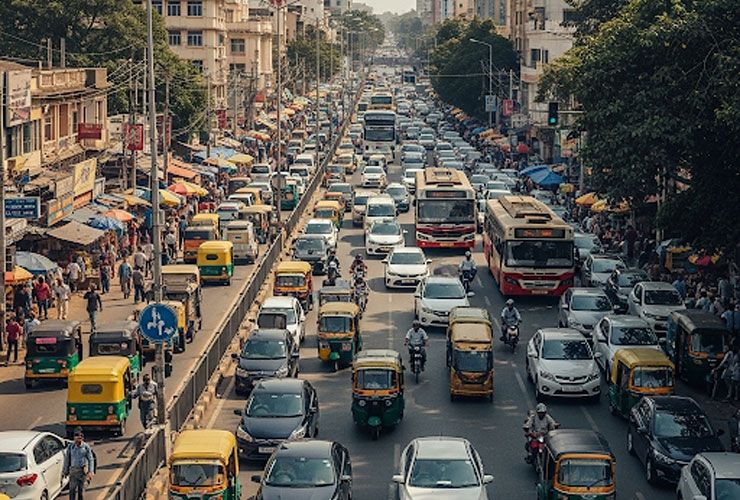Revealed: India's 2 Most Unsafe Cities For Driving/Riding


Delhi and Bangalore have emerged as the most unsafe cities for road users, based on road accident and fatality data from 2023. Together, they accounted for more than 2,300 deaths in a single year, underscoring how serious the road safety problem has become in India’s largest metropolitan areas.

Delhi reported 5,834 crashes in 2023, which made up around 7 per cent of all accidents in the country. These crashes resulted in 1,457 deaths, representing 8 per cent of total national road fatalities.
The demographic breakdown highlights who is most at risk. In the first half of 2024, people aged 40 and above recorded the highest fatalities at 205. Young adults aged 19 to 30 accounted for 185 deaths, and the 31-40 age group saw 156 deaths. This shows that no single age group is immune, though middle-aged and young working-age adults appear especially vulnerable.

Delhi’s black spots highlight specific zones where risks are concentrated. Azadpur Sabzi Mandi reported 20 accidents and 11 deaths, translating into a 55 per cent fatality rate. Wazirabad, ISBT Kashmere Gate, and Bhalswa Chowk are also identified as high-risk locations with frequent serious crashes.
Bangalore recorded 870 fatal accidents in 2023, leading to 915 deaths, its highest number in a decade. Two-wheelers were involved in 70 per cent of these crashes, underlining the vulnerability of motorcyclists and scooter riders in a city with over 1.2 crore registered vehicles.

Fatal crashes in Bangalore have steadily risen from 663 in 2018 to 870 in 2023, showing a clear deterioration despite road safety campaigns and enforcement drives. The growth of the city, rising vehicle density, and limited expansion of road infrastructure have all contributed to this trend.
Authorities have mapped 43 black spots and 24 high-risk corridors in Bangalore. Among the worst locations are Veerasandra bus stop with 14 deaths, Byatarayanapura Junction and Summanahalli Junction with 11 deaths each, Sadahalli Gate with 10 deaths, and Yelahanka Air Force Station bus stop with 8 deaths. These corridors concentrate a large share of fatalities and have become critical targets for future road safety measures.

The effects of unsafe roads extend beyond immediate deaths and injuries. Karnataka alone records one road accident every 11 hours and one death every 12 hours, with a total of 2.1 lakh accidents and 60,115 deaths over the past five and a half years.
The economic cost is equally stark. Accidents disrupt traffic flow, raise insurance payouts, and burden hospitals and families with long-term costs. For cities like Bangalore, which depend heavily on technology-driven productivity, the loss of young working-age commuters has serious social and economic consequences.
The rising fatalities in Delhi and Bangalore show that existing safety efforts are falling short. Both cities face unique but overlapping challenges, Delhi with high-speed corridors and dangerous intersections, and Bangalore with its heavy two-wheeler dependence and rapid vehicle growth.
With India’s urban vehicle population expanding faster than road infrastructure can support, the risks for drivers, riders, and pedestrians continue to increase. Black spots remain dangerous year after year despite repeated identification, pointing to gaps in enforcement, road design, and driver behaviour.
Until consistent structural changes, better road engineering, stricter enforcement, and awareness programmes, are put in place, the distinction of being India’s most unsafe cities for road use is unlikely to shift away from Delhi and Bangalore.